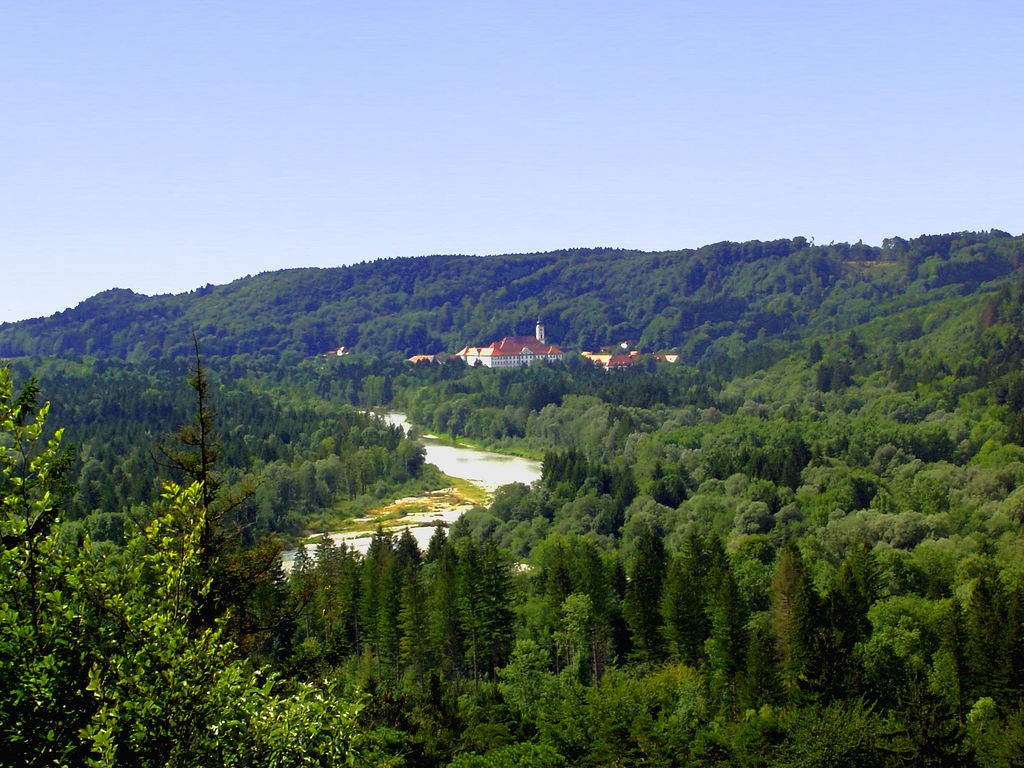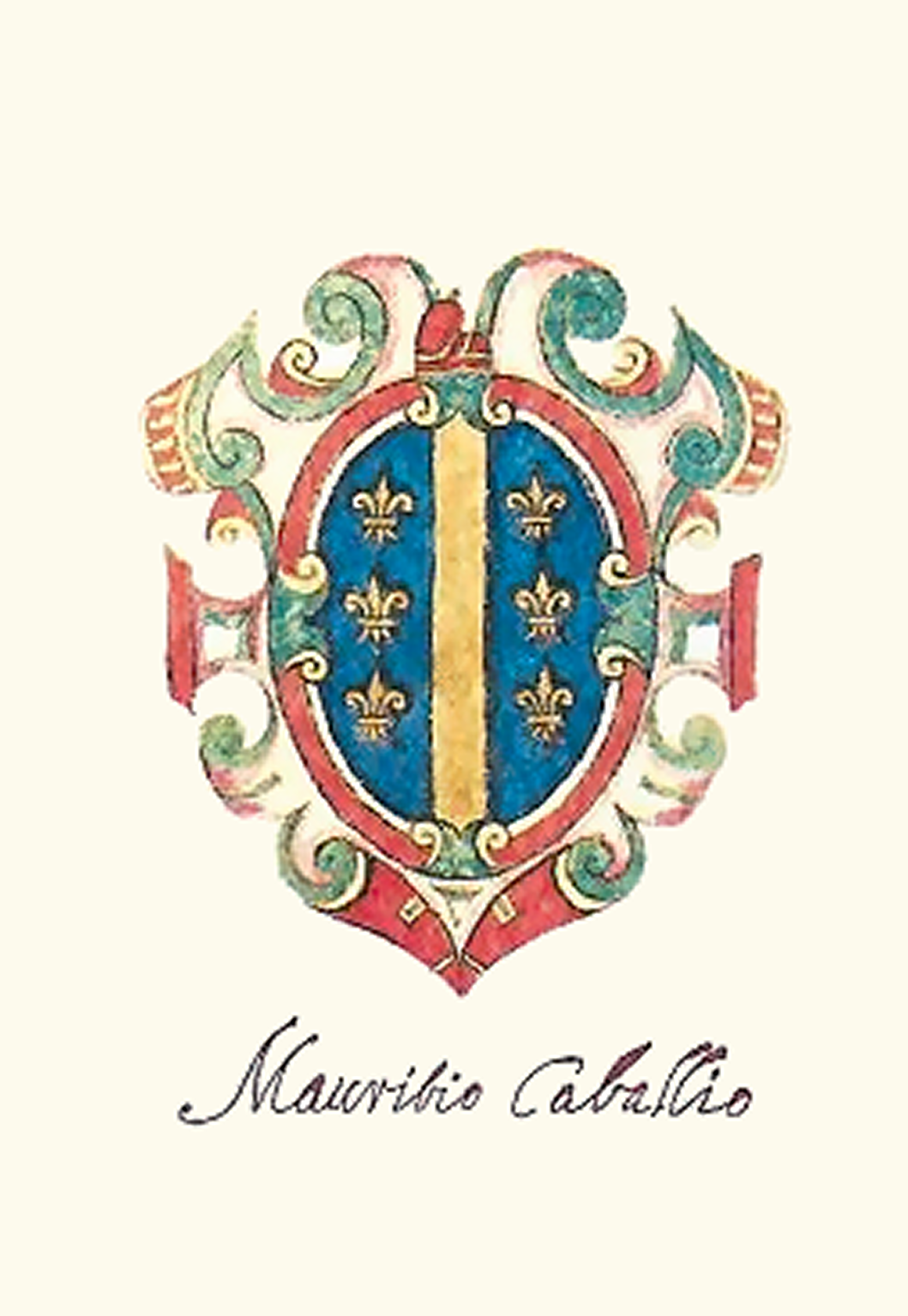|
Joseph Of Verona
Joseph of Freising (died 17 January 764), also known as Joseph of Verona, was Bishop of Freising from 747 or 748 until his death. Life There is no direct evidence of Joseph's place of origin, or place of birth. It is sometimes claimed that he was a native of Verona in Italy, whence his alternative name, but it is equally possible that he was from Bavaria or northern Austria, or perhaps the Tyrol. He is presumed to have been a monk in Saint Corbinian's new foundation, Freising Abbey, before in 747 or 748 he was appointed bishop of Freising, the third to hold the office. He had the reputation of a zealous and energetic promoter of the interests of the church, to have had a keen grasp of the importance for the church of acquiring large possessions, and to have been highly effective in attracting donations, especially of land. He was also active as a founder of churches and religious houses. In particular he founded Isen Abbey in 752, and dedicated it to Saint Zeno of Verona. He was ... [...More Info...] [...Related Items...] OR: [Wikipedia] [Google] [Baidu] |
Schäftlarn Abbey
Schäftlarn Abbey (Kloster Schäftlarn) is a Order of St. Benedict, Benedictine monastery on the Isar in Schäftlarn, south of Munich in Bavaria, Germany. History The monastery was founded in 762 by Waldrich, Bishop of Passau, Waltrich, a priest of noble family, on his own land. The monastery was dedicated to Saint Denis of Paris, Saint Dionysius of Paris. The first monks came from the cathedral monastery of Freising Cathedral, Saint Mary and Corbinian in Freising. In the tenth century the monastery was turned into a house for lay canons. During the next two centuries the monastery grew as a result of various gifts and endowments (among them the estates of Schwabing and Hesselohe). In 955 the monastery was destroyed by the Hungarians who were then making marauding incursions into Germany.Löffler, Kleme ... [...More Info...] [...Related Items...] OR: [Wikipedia] [Google] [Baidu] |
Burials In Bavaria
Burial, also known as interment or inhumation, is a method of Disposal of human corpses, final disposition whereby a dead body is placed into the ground, sometimes with objects. This is usually accomplished by excavating a pit or trench, placing the deceased and objects in it, and covering it over. A funeral is a ceremony that accompanies the final disposition. Humans have been burying their dead since shortly after the origin of the species. Burial is often seen as indicating respect for the dead. It has been used to prevent the odor of decay, to give family members closure and prevent them from witnessing the decomposition of their loved ones, and in many cultures it has been seen as a necessary step for the deceased to enter the afterlife or to give back to the cycle of life. Methods of burial may be heavily ritualized and can include natural burial (sometimes called "green burial"); embalming or mummification; and the use of containers for the dead, such as shrouds, coff ... [...More Info...] [...Related Items...] OR: [Wikipedia] [Google] [Baidu] |
764 Deaths
__NOTOC__ Year 764 ( DCCLXIV) was a leap year starting on Sunday (link will display the full calendar) of the Julian calendar. The denomination 764 for this year has been used since the early medieval period, when the Anno Domini calendar era became the prevalent method in Europe for naming years. Events By place Europe * Domenico Monegario is deposed, after Pope Paul I demanded donations from Venice. Monegario is blinded and exiled, and succeeded by Maurizio Galbaio as the 7th doge of Venice. During his reign, Venetian wealth is increased via trade. Britain * King Offa of Mercia conquers Kent, and brings an end to the rule of kings Ealhmund and Sigered in West Kent. He imposes Mercian overlordship on the kingdom, but allows a local king, Heaberht, to rule there. Asia * October 14– 21 – Fujiwara no Nakamaro Rebellion: A short-lived revolt led by Fujiwara no Nakamaro is suppressed. Emperor Junnin is deposed after a 6-year reign, and forced into exi ... [...More Info...] [...Related Items...] OR: [Wikipedia] [Google] [Baidu] |
Roman Catholic Bishops Of Freising
Roman or Romans most often refers to: *Rome, the capital city of Italy *Ancient Rome, Roman civilization from 8th century BC to 5th century AD *Roman people, the people of ancient Rome *'' Epistle to the Romans'', shortened to ''Romans'', a letter in the New Testament of the Christian Bible Roman or Romans may also refer to: Arts and entertainment Music * Romans (band), a Japanese pop group * ''Roman'' (album), by Sound Horizon, 2006 * ''Roman'' (EP), by Teen Top, 2011 *" Roman (My Dear Boy)", a 2004 single by Morning Musume Film and television * Film Roman, an American animation studio * ''Roman'' (film), a 2006 American suspense-horror film * ''Romans'' (2013 film), an Indian Malayalam comedy film * ''Romans'' (2017 film), a British drama film * ''The Romans'' (''Doctor Who''), a serial in British TV series People *Roman (given name), a given name, including a list of people and fictional characters *Roman (surname), including a list of people named Roman or Romans *Ῥωμ� ... [...More Info...] [...Related Items...] OR: [Wikipedia] [Google] [Baidu] |
Beatified
Beatification (from Latin ''beatus'', "blessed" and ''facere'', "to make”) is a recognition accorded by the Catholic Church of a deceased person's entrance into Heaven and capacity to intercede on behalf of individuals who pray in their name. ''Beati'' is the plural form, referring to those who have undergone the process of beatification; they possess the title of "Blessed" (abbreviation "Bl.") before their names and are often referred to in English as "a Blessed" or, plurally, "Blesseds". History Local bishops had the power of beatifying until 1634, when Pope Urban VIII, in the apostolic constitution ''Cœlestis Jerusalem'' of 6 July, reserved the power of beatifying to the Holy See. Since the reforms of 1983, as a rule, one miracle must be confirmed to have taken place through the intercession of the person to be beatified. Miracles are almost always unexplainable medical healings, and are scientifically investigated by commissions comprising physicians and theologian ... [...More Info...] [...Related Items...] OR: [Wikipedia] [Google] [Baidu] |
Isen, Bavaria
Isen is a municipality in the district of Erding in Bavaria in Germany. Isen has once been home to a Benedictine abbey , image = Medalla San Benito.PNG , caption = Design on the obverse side of the Saint Benedict Medal , abbreviation = OSB , formation = , motto = (English: 'Pray and Work') , foun .... The abbey was dissolved however during the secularisation in 1802 so only the St. Zeno Church remains today. In 1946 Isen had a population of 1,631.''Columbi-Lippincott Gazetteer'', p. 850 Sources Erding (district) {{Erding-geo-stub ... [...More Info...] [...Related Items...] OR: [Wikipedia] [Google] [Baidu] |
German Mediatisation
German mediatisation (; german: deutsche Mediatisierung) was the major territorial restructuring that took place between 1802 and 1814 in Germany and the surrounding region by means of the mass mediatisation and secularisation of a large number of Imperial Estates. Most ecclesiastical principalities, free imperial cities, secular principalities, and other minor self-ruling entities of the Holy Roman Empire lost their independent status and were absorbed into the remaining states. By the end of the mediatisation process, the number of German states had been reduced from almost 300 to just 39. In the strict sense of the word, mediatisation consists in the subsumption of an immediate () state into another state, thus becoming ''mediate'' (), while generally leaving the dispossessed ruler with his private estates and a number of privileges and feudal rights, such as low justice. For convenience, historians use the term ''mediatisation'' for the entire restructuring process that to ... [...More Info...] [...Related Items...] OR: [Wikipedia] [Google] [Baidu] |
Aribo Of Freising
Arbeo (also Aribo or Arbo) of Freising (723 or earlier near Meran – 4 May 784) was an early medieval author and Bishop of Freising from 764. Arbeo probably was a scion of the Huosi noble dynasty in the stem duchy of Bavaria. He may have been the child which, according to his own hagiography, Saint Corbinian rescued from the floodwaters of the Passer River near Meran. Arbeo was raised by Corbinians's brother Erembert and prepared for an ecclesiastical career, becoming a member of the Benedictine Order. At first a priest and notary under Bishop Joseph of Freising and official of the episcopal chancery, he was appointed abbot of the newly founded monastery of Scharnitz in 763. One year later he succeeded Joseph as Bishop of Freising. During his tenure the Bavarian monasteries of Innichen, Schäftlarn and Schliersee were established, and Scharnitz Abbey relocated to Schlehdorf. Arbeo had the relics of Saint Corbinian transferred to Freising. In the long-time quarrels of the ... [...More Info...] [...Related Items...] OR: [Wikipedia] [Google] [Baidu] |
Scharnitz Abbey
Scharnitz Abbey (german: Kloster Scharnitz) was a Benedictine monastery in Mittenwald in Bavaria, Germany. The monastery, dedicated to Saints Peter and Paul, was founded before 763 by Reginperht and Irminfried, believed to be members of the Bavarian noble family of the Huosi. Arbeo of Freising, a member of the same family, was its first abbot, until he was appointed Bishop of Freising in 764. Between 769 and 772, on his advice, the community was resettled to Schlehdorf Abbey on the Kochelsee Kochelsee or Lake Kochel is a lake south of Munich on the edge of the Bavarian Alps. The western 1.7 km² or 28.3 percent of the lake lies within the borders of the town of Schlehdorf, while the rest belongs to Kochel am See. The southern edge of ..., under abbot Atto, who is counted as the first abbot of Schlehdorf. The reasons for the move so soon after the foundation are not known. External links Klöster in Bayern Benedictine monasteries in Germany Monasteries in Bavaria Christi ... [...More Info...] [...Related Items...] OR: [Wikipedia] [Google] [Baidu] |
Saint Zeno Of Verona
Zeno of Verona ( it, Zenone da Verona; about 300 – 371 or 380) was either an early Christian Bishop of Verona or a martyr. He is a saint in the Roman Catholic Church and in the Orthodox Church. Life and historicity According to a Veronese author named Coronato, a notary of the 7th century, Zeno was a native of Mauretania. He taught many children of Africa about the Catholic religion and he also helped them with their school work. The children could rely on someone who could help them. Another theory is that Zeno was a follower of Athanasius, patriarch of Alexandria, who accompanied his master when the latter visited Verona in 340. The style of the 90 or so ''Sermones'' attributed to Zeno has also been considered evidence of his African origins due to its literary style, since Christian African writers of the time frequently used neologisms and wordplay. Many of the ''Sermones'' concern Old Testament exegesis and "have a definite anti-Semitic element in them".Alban Butler, Davi ... [...More Info...] [...Related Items...] OR: [Wikipedia] [Google] [Baidu] |
Bishop Of Freising
The following people were bishops, prince-bishops or archbishops of Freising or Munich and Freising in Bavaria: Bishops of Freising * St. Corbinian (724–730); founded the Benedictine abbey in Freising, although the diocese was not organized until 739) : Establishment of episcopal organisation in Old Bavaria by Saint Boniface in 739. * Erembert (739–747/748; sometimes referred to as Corbinian's half brother) * Joseph of Freising, also known as Joseph of Verona (747/748–764) * Arbeo (764–783/784) * Atto (783/784–810/811) * Hitto (810/811–834/835) * Erchanbert (835/836–854) * Anno (854/855–875) * Arnold (875–883) * Waldo (883/884–903/906) * Utto (904/906–907) * Dracholf (907–926) * Wolfram (926–937) * St. Lantpert (937/938–957) * Abraham (956/957–993/994) * Gottschalk of Hagenau (994–1005) * Egilbert of Moosburg (1005–1039) * Nitker (1039–1052) * Ellenhard, Count of Meran (1052–1078) * Meginward, Count of Scheyarn (1078–10 ... [...More Info...] [...Related Items...] OR: [Wikipedia] [Google] [Baidu] |






